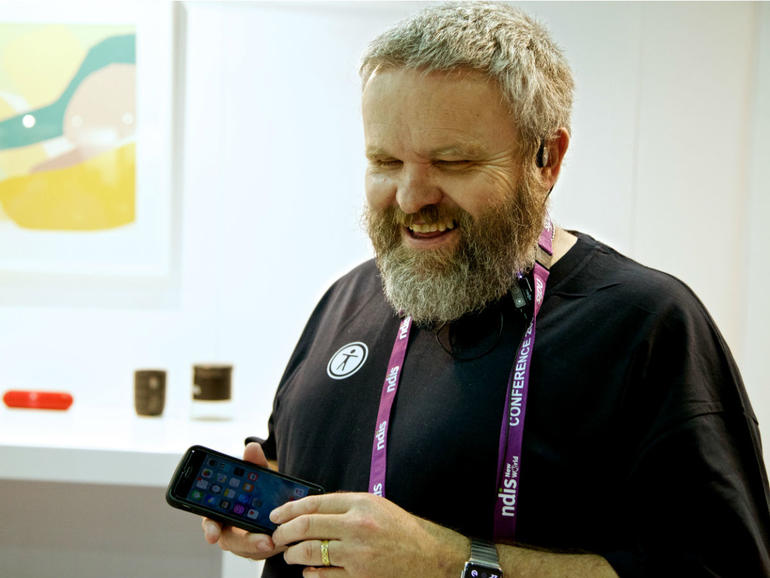Vision Australia national assistive technology advisor, David Woodbridge has helped thousands of people overcome their technology fears. He details his best tips to get a user who is blind, or has low vision open to trying new devices and gadgets.
How many times have you tried using a new gadget and just given up because you think, it’s too hard? Imagine that feeling when you can’t see. “Working at Vision Australia for 30 years, I have seen competent, positive people turn into frustrated messes as they come across a tiny problem with a new gadget or piece of technology.
When you have been told most of your life because of your disability, you can’t do things, it can be quite easy to give up and not try at all. He said little setbacks and small learning curves are rife in technology. But the benefits outweigh initial troubles.
It has been my job to demystify technology to the community, and show that as a blind user , technology can be hugely beneficial. Here are my four best tips for getting someone comfortable with a new piece of technology:”
- Identify the reason they need the technology and find the easiest solution
Technology is a tool like anything else, and like a tool, you need to have a reason to use it. Finding out what task needs to be performed, and then working out through discussion what the most appropriate tool may be, is the starting point.
- Avoid set up frustrations (get it fit for use before the user touches it)
Trialling out the technology is usually the next step. It’s important that the person is only concerned with using the product, not setting it up. For instance, you don’t need to know how the car was serviced but know it was and now it drives better. This might mean connecting the device to the home Wi-Fi, setting up a log in, downloading a corresponding app or even charging the device before use.
- Get them to play around without any expectations (encourage mistakes and troubleshoot)
After the initial set up, encourage the person to play with the device. Reassure the person that they will make mistakes, and sometimes a bit of trial and error will happen. They may get frustrated, or they may feel like throwing the thing out the window, but as with everything in our lives, it is part of living, and learning. The key here is to encourage problem solving. Don’t just do it for them, get them to navigate with some clear directions from you.
- Provide instructions (demos, manuals) so they can tackle problems on their own at their own pace
Write up instructions, record a demonstration or training session, or provide some links to where to get help online will do wonders. Remember, tackling a new piece of technology comes with its challenges but it shouldn’t be intimidating. Most of my job has been helping people overcome their fears and perceived limitations. A bit of encouragement and some good role models make the tech world accessible.
Woodbridge hosts the weekly radio show Talking Tech every Tuesday at 4:30pm AEST on Vision Australia Radio at talkingtech.podbean.com where he demos and reviews the latest technology from a blindness and low vision perspective.

